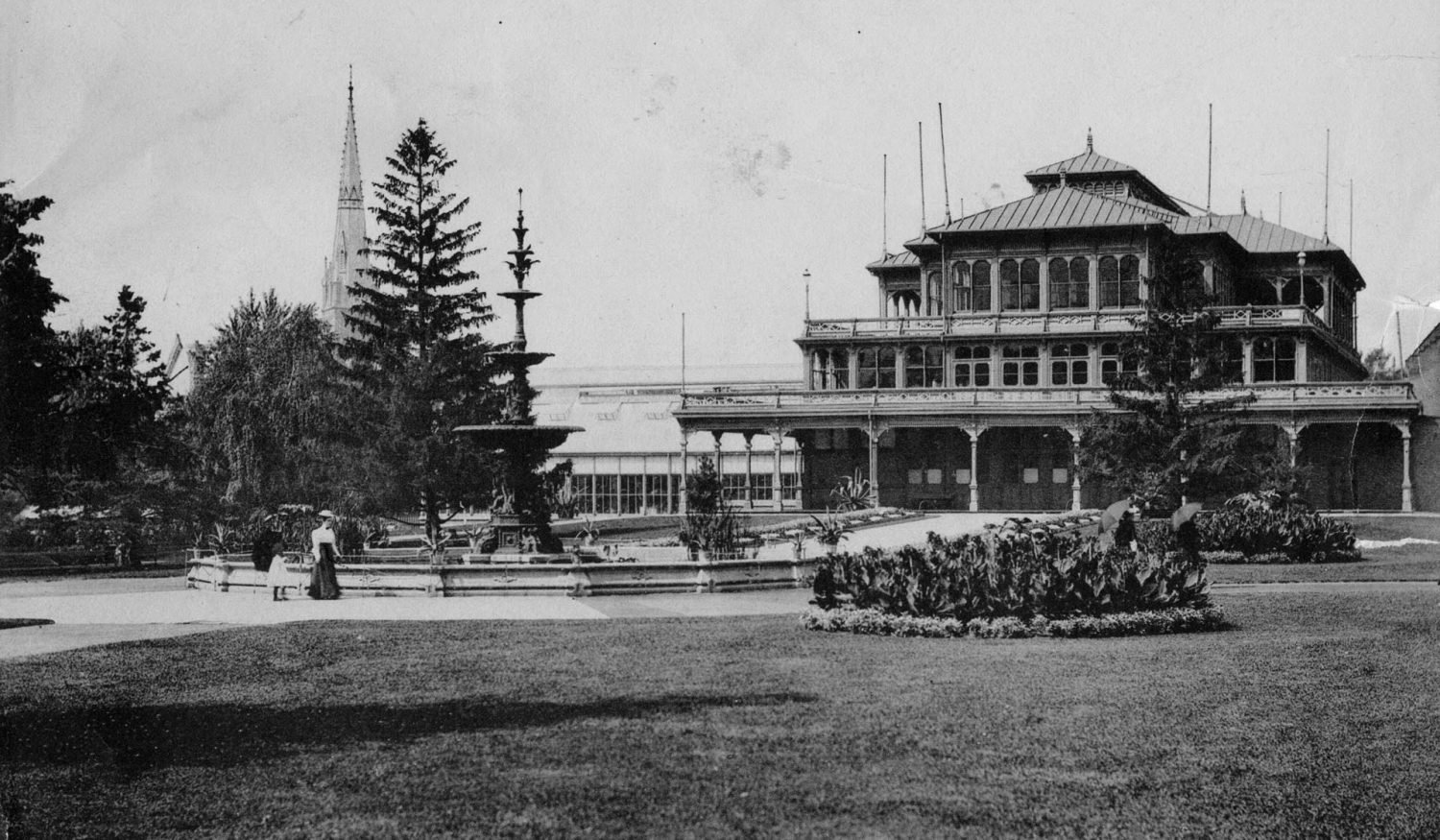The Past
Once pine forest and meadow, the land that would become Allan Gardens has long been traversed by Indigenous peoples.
Allan Gardens is located on is the traditional territory of many nations including the Mississaugas of the Credit, the Anishnabeg, the Chippewa, the Haudenosaunee and the Wendat peoples. The Friends of Allan Gardens acknowledges them and any other Nations who care for the land (acknowledged and unacknowledged, recorded and unrecorded) as the past, present, and future caretakers of this place named Tkaronto: “Where The Trees Meet The Water”.
Early Toronto was subdivided into 100 acre Park Lots, running north from Queen Street above the original town plot. Allan Gardens would eventually develop within the boundaries of Park Lot V. In 1819 William Allan (1770 – 1853), acquired Park Lot V, and named his estate Moss Park. In 1858 Allan’s son and heir George, a lover of horticulture and civic improvement, subdivided the entire Lot for residences and donated a five-acre parcel in the middle of the Lot to the nascent Toronto Horticultural Society. This ‘Garden’ would serve as the leafy centerpiece of the new Victorian neighbourhood.
The Society built the first, open-air rustic pavilion in the middle of the park as a venue for concerts, horticultural displays and gatherings. In 1879 it was replaced with a grand three-storey enclosed pavilion designed as a revenue-generating concert hall. Eventually the Society relinquished management of the park and pavilion to the City of Toronto. After the second pavilion burned to the ground in 1902, the city designed and built a new domed Palm House. It opened in 1910 and its Edwardian architecture remains the architectural centerpiece of Allan Gardens today.
After WWII, Allan Gardens neighbourhood modernized in pace with the growth of the city: from its origins as an enclave of opulent Victorian villas, more apartment buildings and dwellers, benevolent services and committed urbanites nestled in: the neighbourhood densified. Still a popular destination, the city added large commercial greenhouse wings to the Palm House. The plant collection was enhanced and our beloved tradition of seasonal floral displays became part of the rhythm of Allan Gardens. In 2003 the Botany Greenhouse was moved from the University at Queen’s Park to Allan Gardens, adding to the complex of glasshouses.
The Present
Today Allan Gardens continues to be an iconic site of natural and architectural beauty.
It provides visitors and residents of Toronto with a unique place for relaxation, education and horticultural enjoyment. Together, Friends of Allan Gardens and the City of Toronto produce a number of events all year long to offer plenty of reasons to visit. The Gardens also offer tours, leisure programs and educational courses as well as recreation space, an off-leash dog area and childrens’ playground.
The Evolution of our Park
Allan Gardens continues to evolve as does our definition and understanding of the role of a park in today’s society. To ensure the park can continue to serve every member of the community, The City will be carrying out renovations to the Administration Building, Public Washrooms and related Park improvements. The Conservatory will continue to be open during this construction. The existing washrooms beside the Palm House will remain open during construction. Construction is anticipated to be completed in 2023.
The 2006 Masterplan
Intended to balance this challenging set of conditions, the most recent Allan Gardens Master Plan was completed in 2006 (authored by Landplan, following upon a series of predecessor reports). Stemming from its recommendations, a dog park and a children’s playground have been realized, bringing new regular users to the park. The decade since the Master Plan was completed has seen a significant evolution in the way that Toronto approaches park planning and public realm improvements. Planning processes place a greater focus on public consultation, and a burgeoning parks movement has elevated public interest in and expectations for the quality of Toronto’s parks. In addition, the Truth and Reconciliation Commission’s findings urge a fundamental reconsideration of how Indigenous communities and values are actively acknowledged, respected, and included as we collectively re-shape our vision for Canada’s future, including our shared public spaces.
The Future
In February 2017 Friends of Allan Gardens issued a vision document entitled “Refresh.”
The Refresh aims to lay the groundwork for a revitalized Allan Gardens – bringing new governance, programming, design excellence, and visitors to the park. Consistent with its historic role, Allan Gardens will be a place of creativity, education, natural beauty, and cultural influence. Refresh was produced in collaboration with Toronto Parks, Forestry and Recreation, and was endorsed by City Council at its January 2018 meeting. To view Refresh, click here.
Allan Gardens will continue to evolve as part of a larger network of horticultural facilities within the city, characterized by its particularly urban context. Serving as a place of gathering and respite within a vibrant downtown, Allan Gardens will embody a distinctly Torontonian identity. It will offer a layered experience that springs from its Victorian roots but reflects its current reality, utilized and valued by diverse communities. The park will attract a wide range of visitors of all ages and backgrounds – from the neighbourhood, across the city, and beyond – and will offer nurturing, restorative, educational, and celebratory horticultural spaces to frame and broaden our complex cultural relationships with nature. Distinguishing it from conventional European-influenced horticultural gardens, Allan Gardens will embrace an inclusive concept of horticulture that includes diverse cultural practices and explores new opportunities for engagement between people and nature—such as encouraging dialogue between Victorian botanical principles and Indigenous horticultural practices. Guided by these goals, the Friends of Allan Gardens will work closely with the City of Toronto’s Parks, Forestry & Recreation Division and other parks allies.
Principles for Revitalization
01
Promote horticultural excellence, rooted in a broad understanding of horticulture that brings together different practices and perspectives on the relationship between people and nature.
02
Respect, maintain, and enhance the components and qualities of Allan Gardens that reflect the park’s heritage value, including the tangible (such as the greenhouses and their collections) and the intangible (such as the park’s social functions).
The Past
03
Provide new opportunities for diverse visitors to experience and take stewardship of Allan Gardens, as both a neighbourhood park and a landmark destination within the city and wider region.








